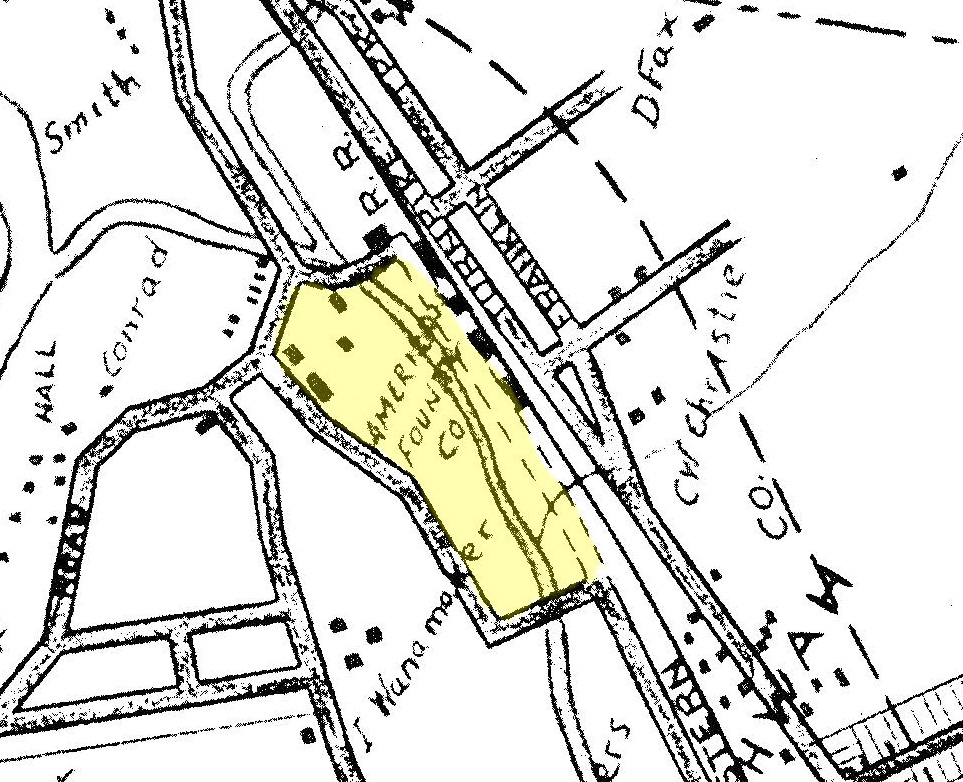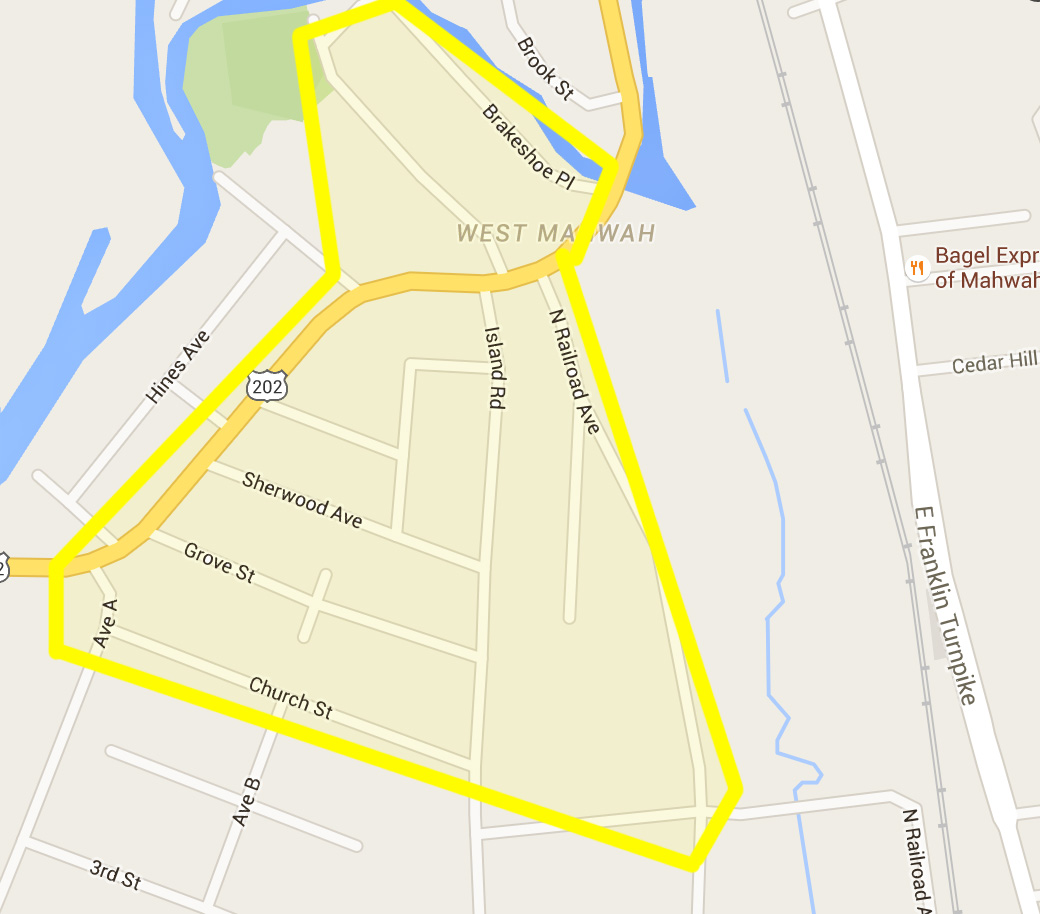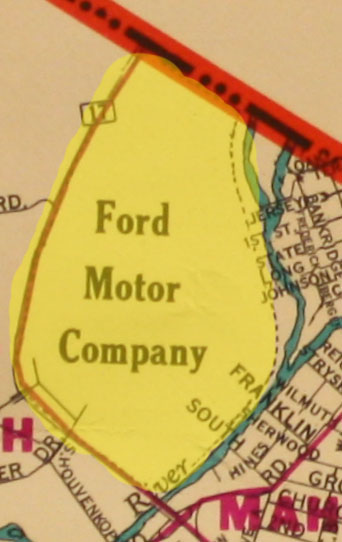The section known as West Mahwah can attribute its growth into a community thanks to the American Brake Shoe Company, whose booming business in the region brought an influx of new residents to the town. The Brake Shoe company officially opened in 1901 and in one year, business at the Mahwah location was booming.

The American Foundry Company Location on the 1913 Bromley Atlas of Bergen County. The location next to the railroad and between Franklin Turnpike and Ramapo Valley Road allowed for quick exporting of goods once made.
With the foundry business pumping out product, an influx of workers was required to keep up with the growing demands. A large number of Eastern European immigrants worked at the foundry, having fled their native lands for reasons ranging from political to economic turmoil. When they arrived in America and found work at the Mahwah plant, they would send word back to their compatriots back home and tell them that work was available in America. Gradually, the families would come in waves, with the patriarch of the family coming first, working to save enough wages to send back home and bring the rest of his family to America (Bischoff & Kahn, 233.)
One of the greatest problems the workers of the foundry faced was lack of significant housing. In a Ramsey Journal article published in December of 1903, it was reported that the Brake Shoe Company was planning on expanding their operation onto another roughly thirty acres, totaling approximately 33.5 acres all together. According to this report, the expansion would increase the employment base at the company to approximately one-thousand men. Developers and speculators were looking to purchase land around the foundry, with hopes to build housing or sell the land to workers. The lead idea for this was the proximity to the foundry for the workers (Greene, 229.)
In my research, I was unable to find exactly what year the housing was started or completed. However, instead of the land speculators purchasing the land to sell plots to workers, the Brake Shoe Company built homes in the surrounding area that they would rent to their workers. These houses were built in the areas of Island Road, Brake Shoe Place, Valley Ro ad, Church Street. While these homes were supposed to be roughly two and three family homes, it was reported that most held approximately six families, with one report of a structure housing eight families. It was not until after World War I that the Brake Shoe Company sold these houses to some of its workers (Bischoff & Kahn, 239-40.)
After the Brake Shoe Company started building their own housing, a developer named George Sherwood got in on the West Mahwah housing boom as well. He bought up land in the same area where the Break Shoe Company was building, subdivided the land into small sized lots, and had houses constructed that he sold to the workers of the company (Bischoff & Kahn, 240.)

The location where the American Brake Shoe Company and George Sherwood began constructing housing for foundry workers. Sherwood Ave (located to the left of middle of the map) was named for the developer.
Another major reason for an increase of population in this area was the opening of the Ford Motor Company plant in 1955. It employed approximately five-thousand employees and stimulated growth of housing and businesses in the town (Bischoff and Kahn, 341; Greene, 343-345.)
